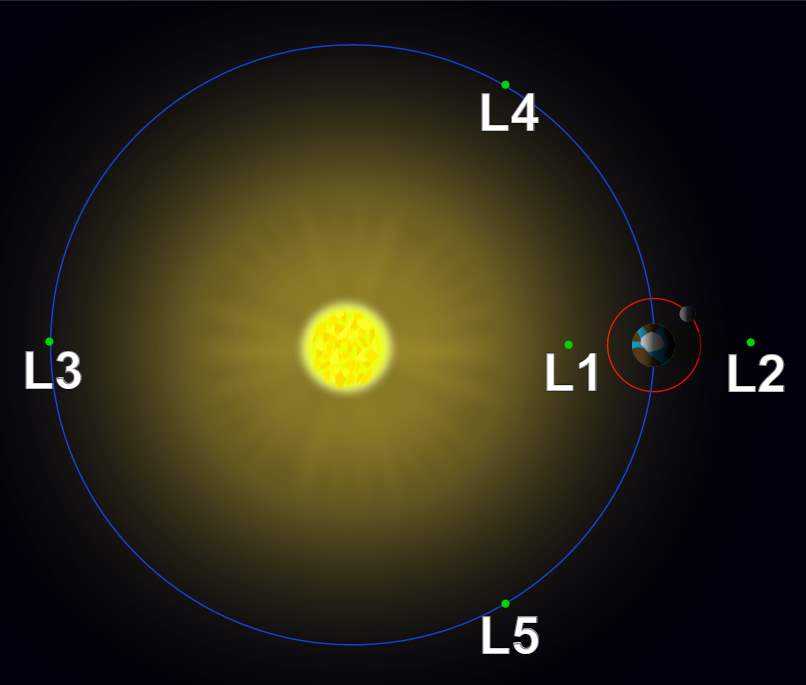On February 22, 2017, NASA astronomers have announced that seven Earth-sized planets have been discovered around an ultra-cool dwarf star named TRAPPIST-1 which is located around 39 light-years from the Earth. And what’s more – three of them are orbiting their star in the habitable zone. Now scientists find clues that TRAPPIST-1 system may contain water.
Then, an international team of astronomers led by the Swiss astronomer Vincent Bourrier from the Observatoire de l’ Université de Genève used the NASA/ESA Hubble Space Telescope to estimate whether there might be water on the planets of TRAPPIST-1 system.
Now, on August 31, 2017, the team announced that their findings suggest that “the outer planets of the system might still harbor substantial amounts of water”, including the three planets within the habitable zone of the star – TRAPPIST-1e, f, and g. This result lends further weight to the possibility that these planets may indeed be habitable.
How did scientists decide that TRAPPIST-1 system may contain water?

To study the amount of ultraviolet radiation received by the individual planets of the system, the team used the Space Telescope Imaging Spectrograph (STIS) on the NASA/ESA Hubble Space Telescope which combines a camera with a spectrograph (see notes 1) and covers a wide range of wavelengths from the near-infrared region into the ultraviolet.
Why ultraviolet? Team leader Bourrier explains: “Ultraviolet radiation is an important factor in the atmospheric evolution of planets. As in our own atmosphere, where ultraviolet sunlight breaks molecules apart, ultraviolet starlight can break water vapor in the atmospheres of exoplanets into hydrogen and oxygen.”
Lower-energy ultraviolet radiation causes a chemical reaction called photodissociation (a process that chemical compound is broken down by photons) and breaks up water molecules. The resulting products (hydrogen and oxygen) can escape into space with XUV radiation (ultraviolet rays with more energy) and X-rays heat the upper atmosphere of a planet.
Especially hydrogen, as it is very light, can escape the exoplanets’ atmospheres and be detected around the exoplanets. If we can detect hydrogen around an exoplanet, this may be a possible indicator of atmospheric water vapor.
The observed amount of ultraviolet radiation emitted by TRAPPIST-1 indeed suggests that the planets could have lost gigantic amounts of water over the course of their history – especially the two innermost planets (TRAPPIST-1ba and c) of the system, TRAPPIST-1b, and TRAPPIST-1c, which receive the largest amount of ultraviolet energy.
Co-author of the study, Julien de Wit from MIT, USA, explains “Our results indicate that atmospheric escape may play an important role in the evolution of these planets”.
Water on the habitable-zone planets of TRAPPIST-1
According to scientists, during the last eight billion years the inner planets which receive a high amount of ultraviolet could have lost more than 20 Earth-oceans-worth of water during the last eight billion years. But, the outer planets of the system, including the three planets in the habitable zone (TRAPPIST-1e, f, and g) should have lost much less water.
So, still, there could be water on their surfaces. The calculated water loss rates, as well as geophysical water release rates, also favor the idea that the outermost, more massive planets retain their water. However, with the currently available data and telescopes, no final conclusion can be drawn on the water content of the planets orbiting TRAPPIST-1.
Bourrier summarizes “while our results suggest that the outer planets are the best candidates to search for water with the upcoming James Webb Space Telescope (see notes 2), they also highlight the need for theoretical studies and complementary observations at all wavelengths to determine the nature of the TRAPPIST-1 planets and their potential habitability”.
Notes
- A spectrograph is an instrument that separates light into a frequency spectrum and records the signal using a camera. The term was first used in July 1876 by Dr. Henry Draper when he invented the earliest version of this device, and which he used to take several photographs of the spectrum of Vega.
- Scheduled to launch in October 2021 (launched on December 25, 2021), the James Webb Space Telescope (JWST) is a space telescope that is part of NASA’s Next Generation Space Telescope program, developed in coordination between NASA, the European Space Agency, and the Canadian Space Agency. It will be located near the Earth-Sun L2 Lagrangian point. In celestial mechanics, the Lagrangian points are positions in an orbital configuration of two large bodies where a small object affected only by gravity can maintain a stable position relative to the two large bodies. The Lagrange points mark positions where the combined gravitational pull of the two large masses provides precisely the centripetal force required to orbit with them. There are five such points, labeled L1 to L5, all in the orbital plane of the two large bodies. The first three are on the line connecting the two large bodies and the last two, L4 and L5, form an equilateral triangle with the two large bodies. The two latter points are stable, which implies that objects can orbit around them in a rotating coordinate system tied to the two large bodies. Several planets have minor planets near their L4 and L5 points (trojans) with respect to the Sun, with Jupiter, in particular, having more than a million of these. Artificial satellites have been placed at L1 and L2 with respect to the Sun and Earth, and Earth and the Moon for various purposes, and the Lagrangian points have been proposed for a variety of future uses in space exploration.

Sources
- “Hubble delivers first hints of a possible water content of TRAPPIST-1 planets” on spacetelescope.org
- Spectrograph on Wikipedia
- James Webb Space Telescope on Wikipedia
- Lagrangian point on Wikipedia
- Space Shuttle Endeavour’s Touchdown Meets Columbia’s Salute [An amazing photo from the past] - February 29, 2024
- Moon Landings: All-Time List [1966-2024] - February 23, 2024
- From Orbit to Ordinary: 10 Earthly Applications of Space Technology - January 23, 2024



